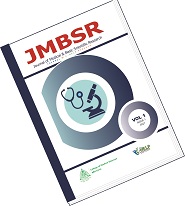Clinical, Haematological and Immunological Profile of a Cohort of Human Immunodeficiency Virus-infected Subjects Initiating Antiretroviral Therapy at a Tertiary Treatment Centre in Nigeria
Keywords:
Haematological, Abnormalities, Immunological, Clinical, Underweight, Highly Active Antiretroviral TherapyAbstract
Background: Human immunodeficiency virus infection (HIV) continues to be a global health problem. It is a systemic disease that can affect virtually all organ systems including the immunological and haematological systems. Haematological abnormalities are among the most common complications of HIV infection; and are strong independent predictors of morbidity and mortality in HIV-infected individuals.This study aimed to determine the changes in clinical, haematological and immunological profile of HIV-infected patients commencing antiretroviral therapy, as well as the correlation of these parameters with the CD4 cells count.
Method: This study was a hospital-based secondary data analysis from 200 HIV-infected patients aged 18 years and above, who were initiated on HAART and have been on these drugs for 12 months. Relevant data were extracted from patient's case notes. Frequencies, proportions, correlations and paired sample t test were performed and the level of significance was set at p value <0.05.
Results: The mean (±SD) age of the studied population was 40.5±10.9 years and majority were females 68% (n=136). The comparative means (±SD) values of the parameters at baseline and 12 months after commencement of HAART were: haemoglobin concentration (10.26 ± 1.68 vs 11.50 ± 1.11 g/dl, P value <0.0001), lymphocyte count (40.0 ± 13.36% vs 44.13 ± 11.70%, 95%, P value 0.001), eosinophils count concentration (13.46 ± 6.76% vs 11.39 ± 6.51%, 95%, P value 0.003) and platelets count (211.73 ± 108.32 vs 255.98 ± 92.42 X109/L, 95%, P value <0.0001). The mean (±SD) change in CD4 count was (162 ± 96 vs 346 ± 173 cells/mm3, 95%, P value <0.0001). The mean (±SD) of the BMI before and after HAART were (21.22 ± 4.26 vs 24.85 ± 4.47 kg/m2, 95%, P value <0.0001).
Conclusion: Haematological abnormalities remain a common finding in HIV-infected patients. The role of HAART in improving the clinical, haematological and immunological parameters in HIV-positive treatment-naïve patients was confirmed by significant improvements observed in the abnormal parameters following HAART use.

Downloads
Published
License
Copyright (c) 2021 U Abdullahi, MM Oripelaye, FO Olanrewaju, O Onayemi, OA Olasode, OA Oninla

This work is licensed under a Creative Commons Attribution-ShareAlike 4.0 International License.




